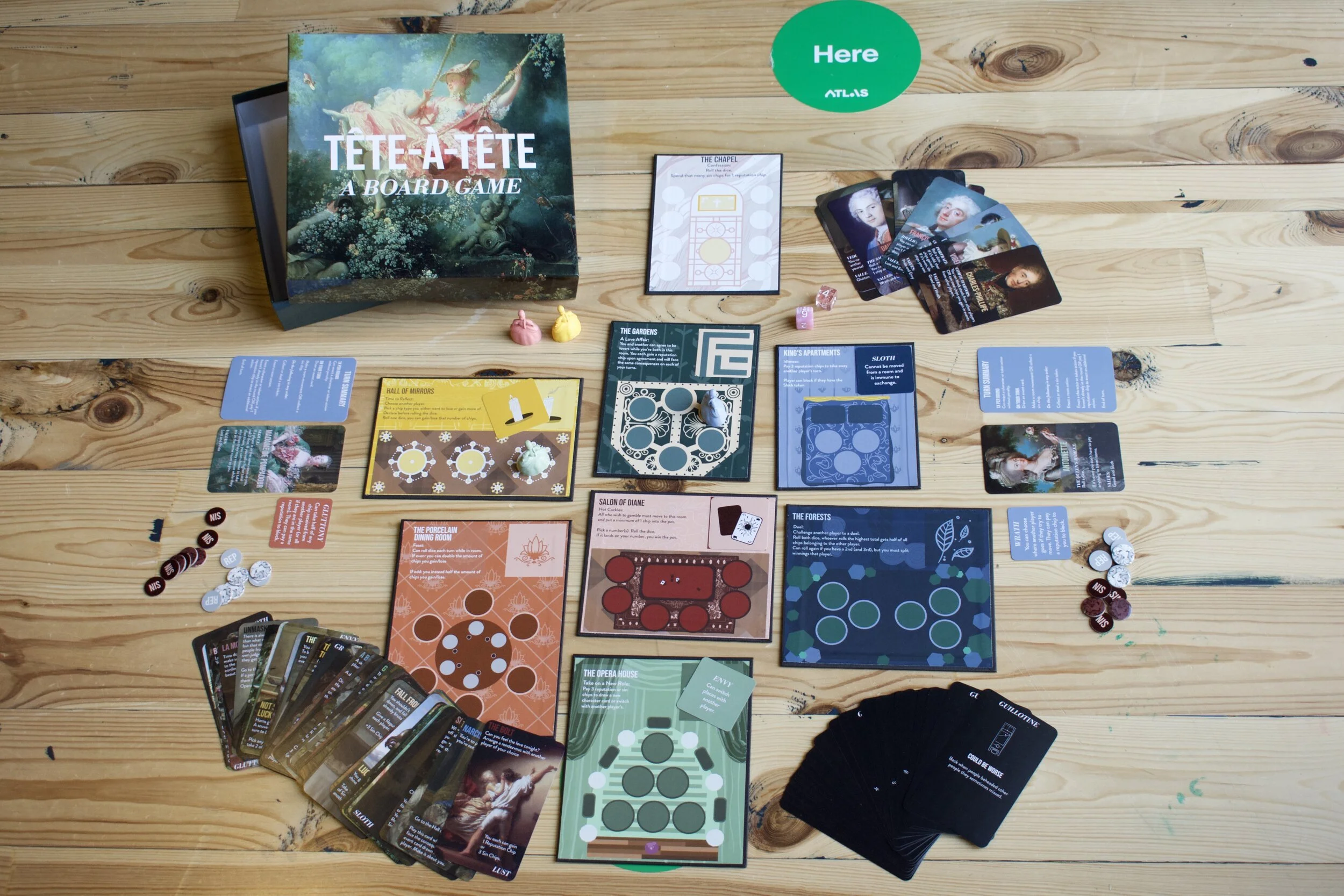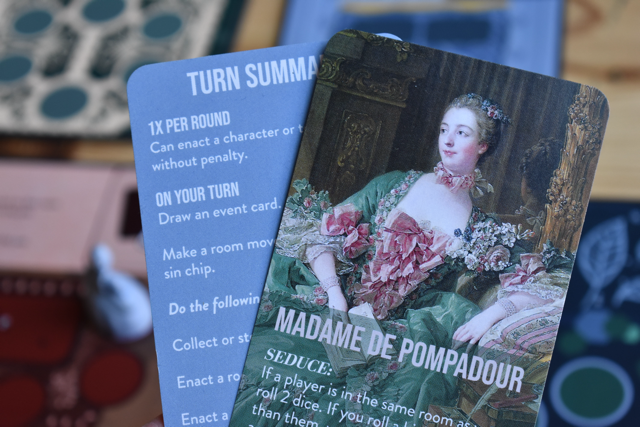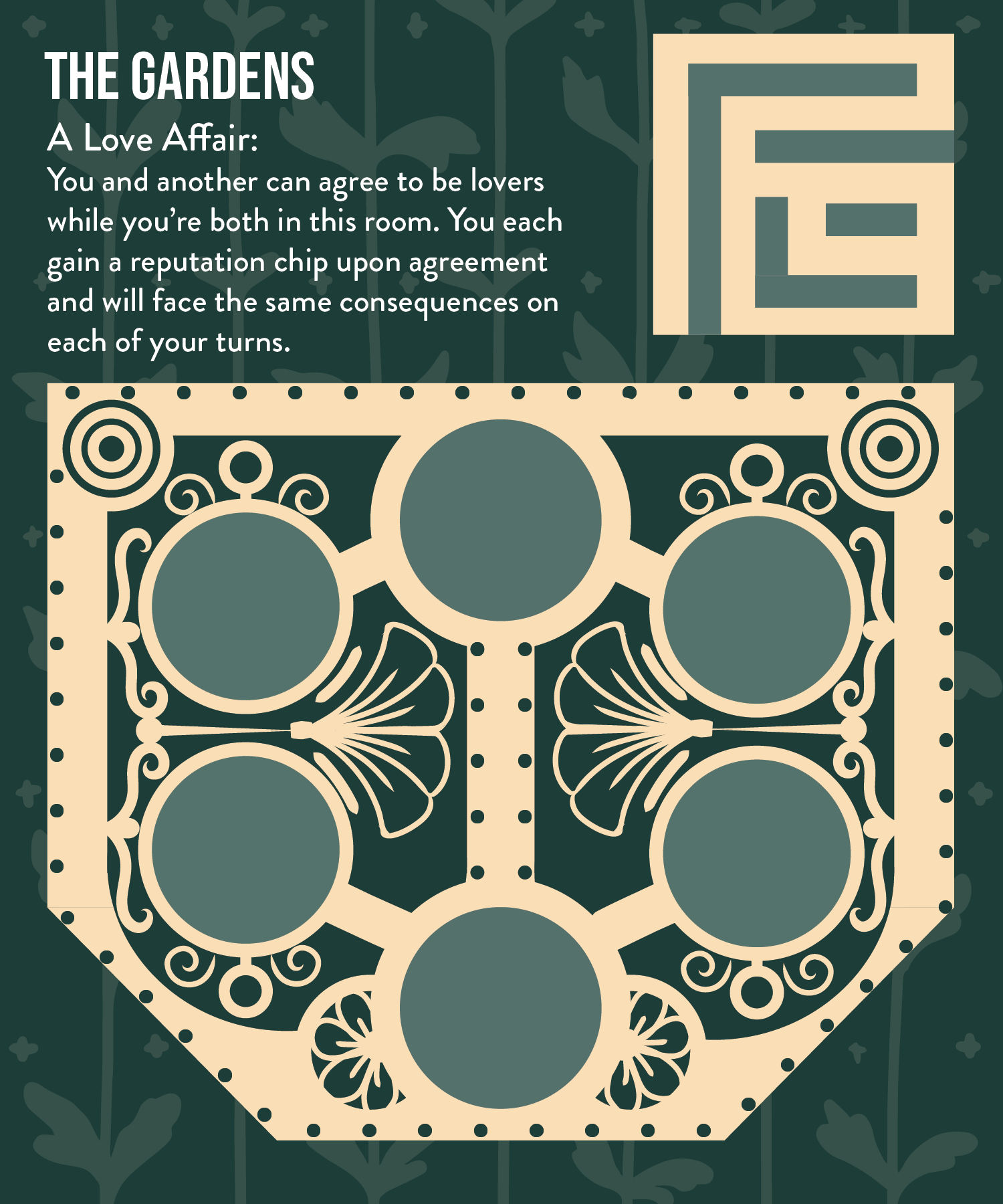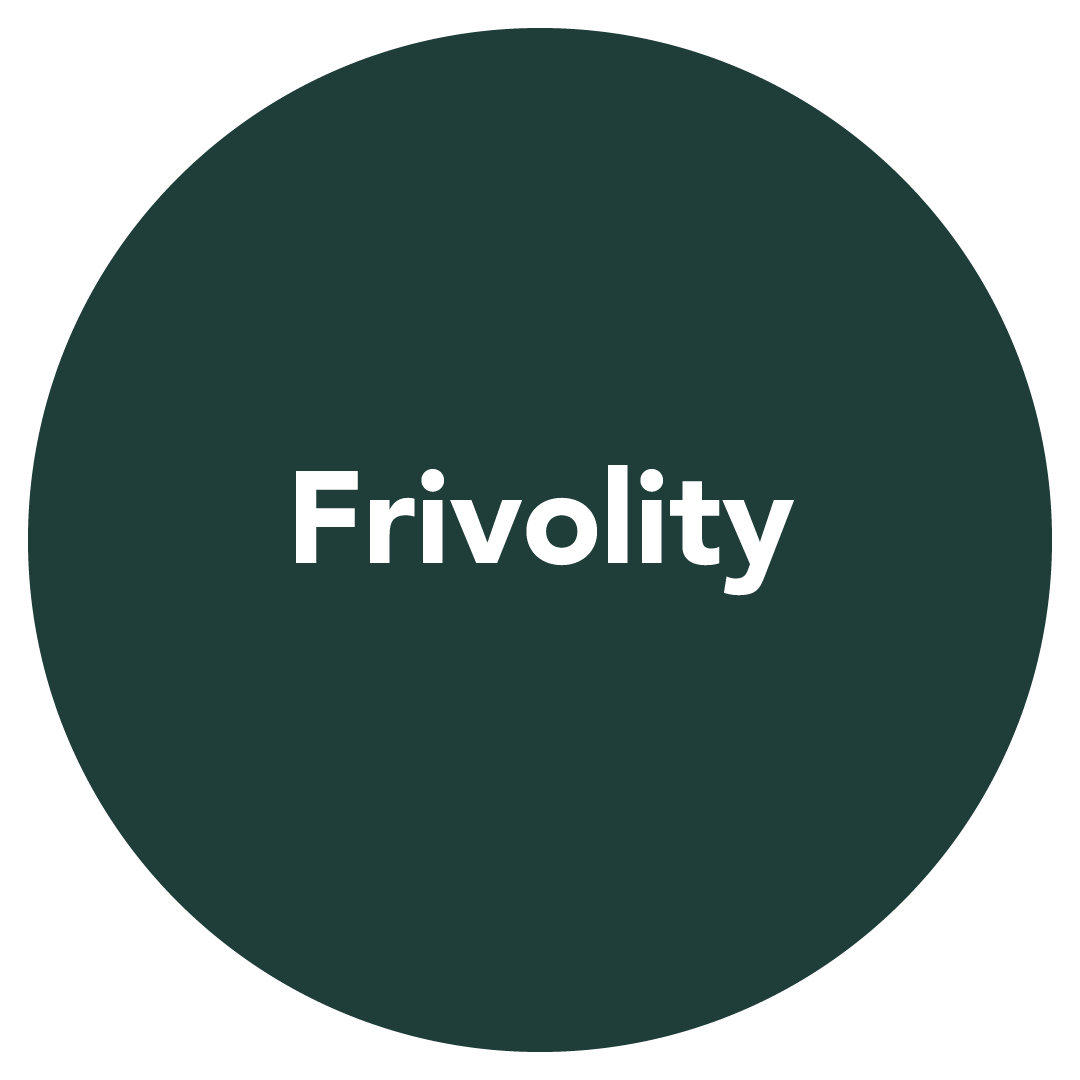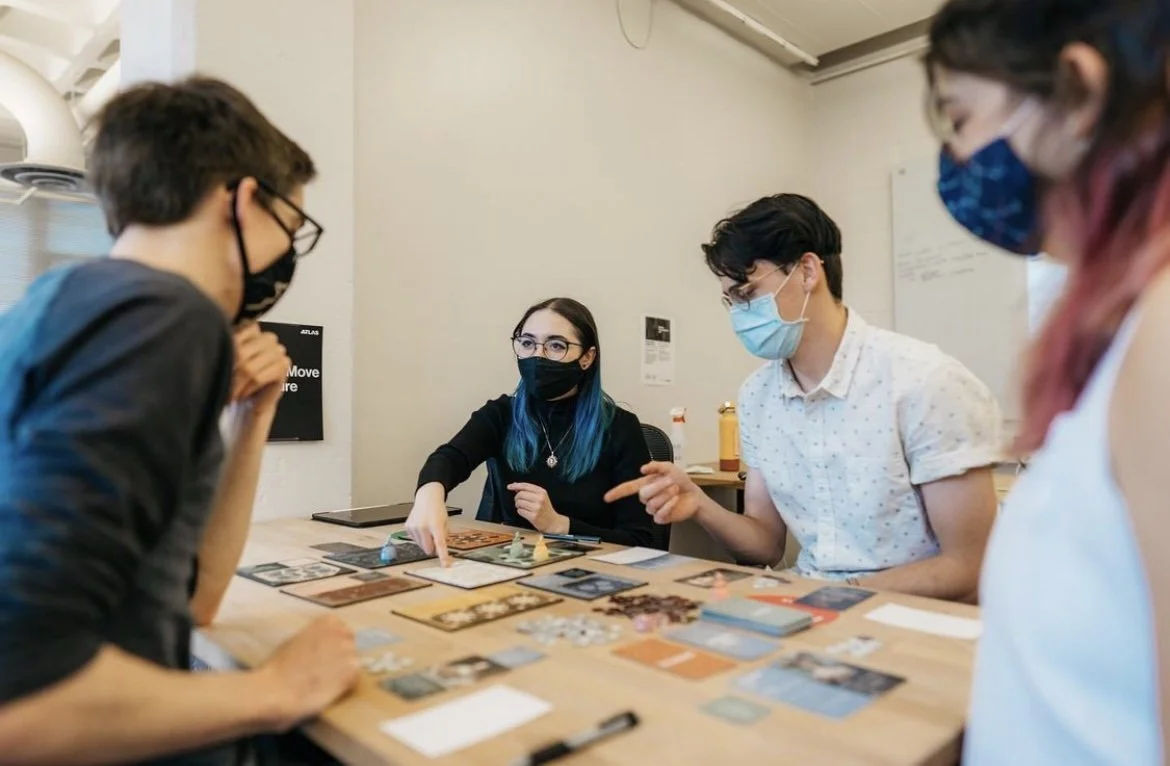Tête-à-Tête
Context: Undergraduate Capstone
Duration: Spring 2021
Role: Game Designer
Tools: Figma, Illustrator, & Rhino
Description:
Tête-à-Tête is an art history based board game that allows people to engage with the people, stories, and themes behind the Rococo art period.
OBJECTIVE
The point systems consists of sin (red) and reputation (white) chips. Reputation chips serve as your life force and ultimately decide a winner. Sin chips on the other hand give you greater movement and freedom during gameplay, but penalize you and the end of the game. Winners are calculated by taking away a reputation chip for every sin chip you have at the end of the game.
The player with the most reputation chips at the end of the game wins (and gets to keep their head).
PLAYER ACTIONS
Players travel through seven rooms in the palace of Versailles. While in each, they can participate in activities like gambling or duels and pick up additional abilities. A turn consists of the following actions:
The game ends when a player reaches all Seven Sin Rooms.
GAME OBJECTS
Character Cards:
There are 12 character cards that players can select from including 6 Artists and 6 Aristocrats.
Each character has their own unique ability that aids them during gameplay.
Event Cards:
There are 42 unique event cards each based on the history and stories behind specific Rococo art pieces.
The Playspace:
Each board represented a room at Versailles and is thematically themed after one of the seven deadly sins. For example, The Gardens board to the right is themed after lust and the activity follows suit.
The Game
It’s France, during the Rococo period, and the wigs are as tall as the spending habits. Living amongst the aristocracy, it’s all about power, and, of course, having a little bit of fun here and there. Party till your heart’s content, kiss a pair of lips you may not legally be bound to, and defend your honor in the early hours of the morning. Life is all glitter and pastels, and you hope it never ends. Then again, all good things do.
Will it be “off with your head”? Or will you be able to have your cake and eat it too?
Game values guide the game design process and often define that player’s experience. Rococo has its own distinct set of values, and to truly reflect the spirit of this art period, I used these characteristics as my game values.
Once I had all the boards designed and the cards written, I prepared my files to be printed. This was the final result!
PROBLEM
GAME VALUES
Problem: There are limited opportunities to engage with art history outside of museums, galleries, and educational/academic settings.
Solution: A board game!
Ideation:
What are some mechanics that could be fun?
Prototyping:
Implement ideas in a way that is testable.
(usually with lots and lots of paper)
Playtesting:
Have people play it!
Are their experiences reflecting my game values?
Evaluate & Revise:
What's working? what isn't?
Make necessary changes.
Repeat.
One way I did this was focusing on competitive play and balancing a sense of pressure and silliness in my player’s actions and emotions while playing.
THE DESIGN PROCESS
The process of designing consisted of weekly iterations, play-testing sessions, and revisions. I aimed to conduct play-testing 1 to 2 times a week so that I could make revisions based on feedback and observations.
ADDING JUICE
The design elements that were implemented were kept relatively simple so they wouldn't clash or overpower with the art used in the character and event cards.
The color palette was created using a color selector and a few different art pieces to ensure cohesiveness.
Thank you for Reading!
Check out the weekly proccess blog

